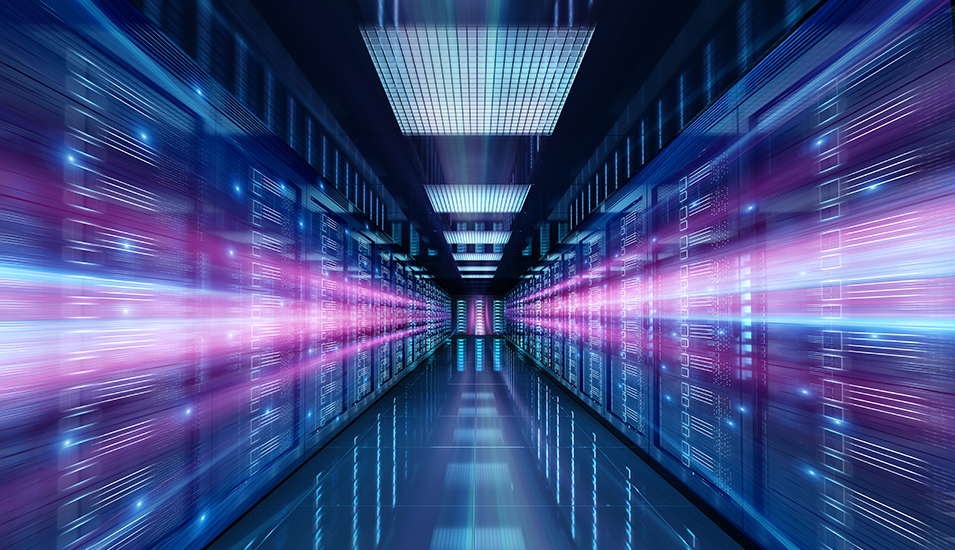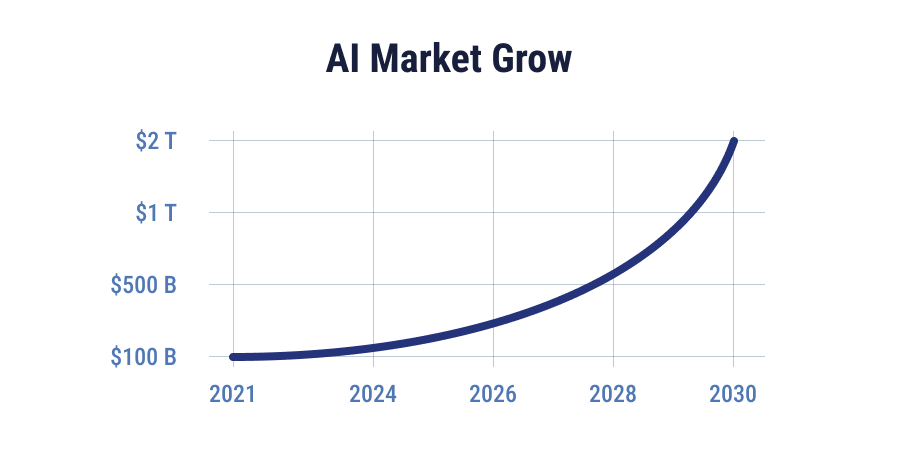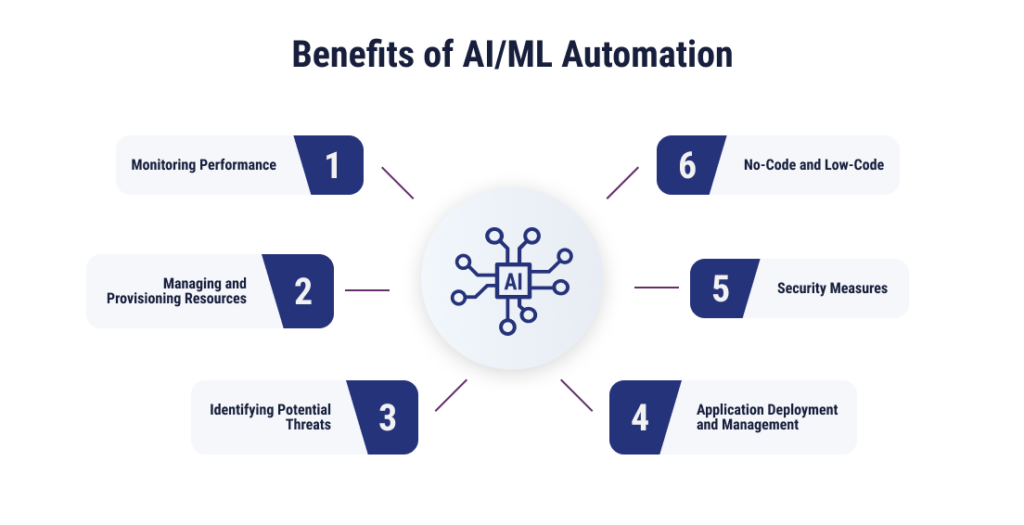Published: August 18, 2025 | Last Updated: December 11, 2025
Top 10 Data Center Industry Trends in 2025

Table of Contents
Each year, the transformation of the data center market accelerates, fueled by cutting-edge technologies, evolving user expectations, and a relentless pursuit of efficiency and sustainability.
Below, we’ll dive into some of the top data center industry trends you should keep an eye on in 2025 and the coming years. But first, let’s take a look at what’s spurring the increasing demand for data center services in the United States and beyond.
Rising Data Center Demand and Expansion
Data centers are far more than a place to house your business data and workflows. For many organizations, they have become a central component of IT infrastructure strategy, driving digital transformation with optimal security. By 2034, the global data center market size is expected to see an annual growth rate of 11.24%, with North America continuing to hold the largest market share.
The growth of the market places greater importance on connectivity, operational efficiency, and performance for data center operators. As computing power consumption rises, it also calls into question how sustainable it is to keep pace with emerging technologies.
Data center providers need to continuously weigh the value of keeping up with key trends, which increase energy demands, against the importance of keeping processes efficient and sustainable. It’s a delicate balance.
Top 10 Trends in the Data Center Industry
The data center industry is growing and evolving at a rapid pace. Below are the biggest data center trends driving this evolution, including artificial intelligence (AI), edge computing, hyperscale, and more.
1. Artificial Intelligence
The AI market is predicted to reach almost $2 trillion by 2030 — a twentyfold increase since 2021.

AI has touched every industry in some way, and the growing popularity of Large Language Models (LLMs) and generative AI has contributed to increased demand for AI-ready data center capacity. High-performance computing uses graphics processing units (GPUs), which have greater resource needs compared to central processing units (CPUs).
GPUs and other AI-optimized hardware generate significant heat and require substantial, stable power delivery. High-density colocation services are designed to meet these needs, offering advanced cooling systems, higher power per rack, and infrastructure tailored for compute-intensive workloads. As businesses adopt AI, they should prioritize colocation providers that go beyond the capabilities of traditional data centers, offering the efficiency, resiliency, and scalability required for sustained AI performance.
2. Cloud Infrastructure Optimization and Refactoring
Of course, not everything is about growth. Optimization is just as important. Rapid deployment means that at some point, businesses need to look at their cloud infrastructure and optimize it to make it more efficient. Refactoring cloud infrastructure can mean getting rid of redundancies, modernizing what’s already in place, and refactoring applications to get the most out of cloud services.
3. Hybrid Cloud
Hybrid cloud can provide the best of both worlds for organizations: the familiarity and customization options of an on-premises environment with the scalability and innovation enabled by cloud computing.
Organizations using hybrid cloud frameworks integrate public and private clouds along with on-premises infrastructure to harness the benefits of each type of environment. Our 2025 Technology & IT Modernization Report found 38% of businesses plan to adopt or invest in hybrid cloud within the next two years, highlighting its role in IT strategies.
Companies that aren’t ready to move all of their systems over to the cloud may find that a hybrid cloud is a more practical and attainable path that enables scalability, faster innovation, and support for emerging technologies like edge computing and AI-driven workloads.
4. Hyperscale
Large enterprises and cloud service providers with greater data storage and processing needs will continue to move to hyperscale data centers. While these large facilities only make up 44% of the global market today, hyperscale operators are expected to make up 61% of all capacity by 2030. This significant increase in new facilities can support enterprises in more scalable and efficient ways.
5. Edge Computing
These hybrid cloud and hyperscale trends coincide with the rise in edge computing. With edge computing, computation and data storage are made available at the “edge” of a system, closer to the physical space where data is consumed and generated. Localized data centers are key to this approach.
Wearable devices, smart home devices, connected security systems, and other Internet of Things (IoT) technologies can benefit greatly from edge computing. Real-time analytics and machine learning (ML) can also be supported by the lower latency and faster processing offered by edge computing.
6. Automation
AI is not just a technology that creates demand for data center resources. It’s also a technology that can support data center operations. AI and machine learning can automate data center tasks like monitoring performance, managing and provisioning resources, and identifying potential threats. Deployment, management, and security measures can all be automated in a data center.
Self-healing infrastructure, which can find and repair problems without human aid, is even on the rise. No-code and low-code automation programs are also becoming more popular, making automation more accessible than ever.

7. Cooling and Energy Consumption
As emerging technologies like AI, self-driving vehicles, and IoT devices increase data center energy consumption, growing demand is also placed on power and cooling systems. Modern facilities are turning to flexible, advanced cooling solutions, including liquid–air hybrid systems and direct-to-chip cooling, to maintain consistent operating temperatures for optimal system performance. These methods complement other sustainable options, such as closed-loop liquid cooling, which can be more cost-effective and environmentally friendly than traditional evaporative cooling.
Finding sustainable energy sources will also become a core part of data center modernization in the coming years. While fossil fuels (including natural gas) still made up 56% of all electricity consumed by data centers in the last year, nuclear energy and renewable energy (like solar power and wind power) combined provided 43% of electricity needs.
8. Skills Gaps
Tech skills gaps will continue to shape data center industry trends for the foreseeable future. Businesses considering buying and managing their own data centers may quickly find that staffing these facilities can be a difficult undertaking. The worker shortage is especially pronounced in the IT sector due to unprecedented demand. In fact, 64% of organizations anticipate a major or severe impact from the IT skills shortage, according to our 2025 Technology & IT Modernization Report.
Internal skill growth is another way to address this gap, but results from this will take longer to come to fruition. When taking this path, significant training is necessary to have sufficient cloud and automation skills in place.
9. Security Enhancements
Data center security remains one of the top priorities for operators and clients alike. In 2025, physical security and cybersecurity innovation will continue to accelerate, offering new ways to protect IT infrastructure, data, and workloads.
Physical security innovations may include the use of biometric access controls, AI-powered surveillance, drone monitoring, and smart fencing systems. Implementing these technologies into data center design helps secure facilities against unauthorized access and physical threats.On the digital front, advanced encryption methods andzero-trust architecture are securing internal systems and limiting lateral movement within networks. AI and machine learning are also being used to detect anomalies and respond to cyber threats in real-time, helping operators protect critical infrastructure in the increasingly sophisticated cyber threat landscape.
10. Regulatory and Compliance Developments
Governments around the world continue to enforce stricter data privacy regulations in response to growing consumer concerns and the increasing value of personal data. Frameworks like the General Data Protection Regulation (GDPR) in Europe, the California Consumer Privacy Act (CCPA), and the Health Insurance Portability and Accountability Act (HIPAA) mandate robust data governance, user consent protocols, and data localization strategies.
To earn customer trust and meet sector-specific regulatory requirements, top data center providers will demonstrate a strong commitment to compliance. This may mean prioritizing certifications, such as ISO/IEC 27001 and SOC 2 Type II, and preparing for incoming sustainability, data protection, and AI usage standards before they are officialized.
Government policies could also influence the sustainability of data center development. For example, some countries set power constraints for operators. Others offer tax incentives or federal funding programs for green data centers, accelerating the shift toward energy-efficient innovation.
The Need for Innovation and Adaptability in Data Centers
To meet these new trends and overcome any challenges they bring with them, data centers need to be able to innovate and adapt quickly.
One way facilities can keep pace with the future of data is through high-density colocation. High-performance computing and AI workloads can be housed with greater ease in data centers that allow for these expanded capacities. TierPoint designs our high-density deployments using industry-leading configurations that offer exceptional space efficiency, as well as better optimized power and advanced cooling resources.

Table of Contents
-
Cloud
Jul 15, 2025 | by Matt Pacheco
How Hyperconverged Infrastructure (HCI) Works with Private Cloud
VIEW MORE -
Colocation
May 14, 2025 | by Matt Pacheco
Moving Beyond Air: The Perks of Liquid Cooling in Data Centers
VIEW MORE -
Data Center
Feb 24, 2025 | by Matt Pacheco
Top Strategies to Optimize IT Infrastructure Stability
VIEW MORE
